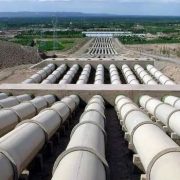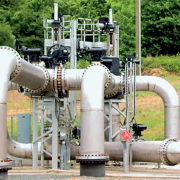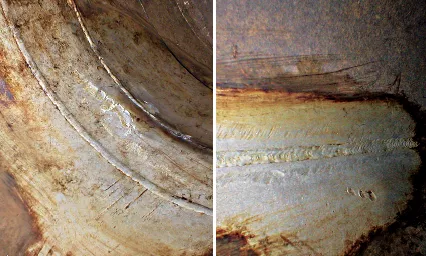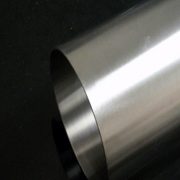The corrosion prevention of above-ground pipeline
The corrosion of above-ground pipelines is caused by the combined action of corrosive ions (Cl-, S2-), CO2, bacteria and dissolved oxygen. Dissolved oxygen is a strong oxidant, it is easy to oxidize iron ions to form precipitation, and the relationship between dissolved oxygen and corrosion rate is linear. Sulfate-reducing bacteria will the existence of the sulfate-reducing hydrogen sulphide in the water, may lead to pipe hydrogen induced cracking and stress corrosion cracking, corrosion products generated ferrous sulfide and adhere on the surface of the steel is poor, easy to fall off, is potential, as the cathode constitute an active micro battery and steel matrix, and continue to produce corrosion to the steel substrate. Saprophytic bacteria adhere to the pipeline and cause fouling blockage, and also produce oxygen concentration cells and cause pipeline corrosion. The oil-water mixture in the surface pipeline may enter the sewage tank after separation. Therefore, when choosing anti-corrosion measures for the above-ground pipelines in the oil fields, the protection effect, construction difficulty, cost and other factors should be considered. Some commonly used anti-corrosion measures are for oil field above-ground pipelines:
Coating
There are many anticorrosive coatings on pipelines, and their performance is different. Choosing appropriate coatings can greatly extend the service life of pipelines. According to the corrosive environment, transport media and other conditions to choose the appropriate coating. The outer protective coating is the first and most important barrier of the above-ground steel pipe, mainly organic coating and metal coating (or coating). Organic coatings can be divided into epoxy resin, modified phenolic epoxy, asphalt, coal tar and other coatings. The experimental results show that the surface of the coating does not bubble when soaked in brine and oil, and the coating meets the requirements of API RP 5L2 adhesion and peel test, indicating that the coating has good adhesion. The coating is heated at 250℃ for 30min and then cooled by water at room temperature. The coating surface has no peeling, no cracking, no bubble, no adhesion loss, etc., that is, the coating has good heat resistance. According to ASTM D522, ASTM D968 and other standards to carry out bending and wear tests, the coating also has good bending and wear resistance.
Cathodic protection
It is not easy to coat the internal surface for small diameter pipelines (pipe diameter less than 60mm), even if the coating is completed indoors, it is difficult to achieve 100% pinhole free. In addition, the inner wall coating is often subjected to wear in the process of use, so the use of cathodic protection can effectively reduce corrosion perforation. Sacrificial anode protection is the earliest cathodic protection method, which is simple to operate and does not require power supply. The sacrificial anode materials commonly used in China include magnesium, zinc, aluminum and their alloys.
The output current of the sacrificial anode depends on its shape and size. In the laboratory test of magnesium, zinc, an aluminum alloy of cathodic protection potential (relative to the copper/copper sulfate reference electrode), three types of alloy are accord with the requirement of oil and gas station cathodic protection specification (cathodic protective potential is 0.85 V or more), including aluminum alloy anode protective effect is best, magnesium anode and zinc alloy anode is poorer.
Special joint
The special joint is designed to solve the damage to the interface coating caused by pipe welding after coating. Methods include: using refractory insulation material and high-temperature coating; Or use a new type of high temperature heat insulation ceramic joint, which has good heat insulation performance and corrosion resistance, as well as in the temperature of drastic changes in the performance of the burst and permeability resistance, but the disadvantage is that the strength and toughness is poor. Laboratory tests show that under the conditions of drastic changes in temperature, the crack resistance and penetration resistance of the joint can meet the requirements. However, under the premise of ensuring the strength and toughness, the joint wall thickness is too thick, and the change of inner diameter will affect the normal construction of the pipeline. The use of refractory insulation materials and high-temperature coating joints can fully meet the requirements of use.







